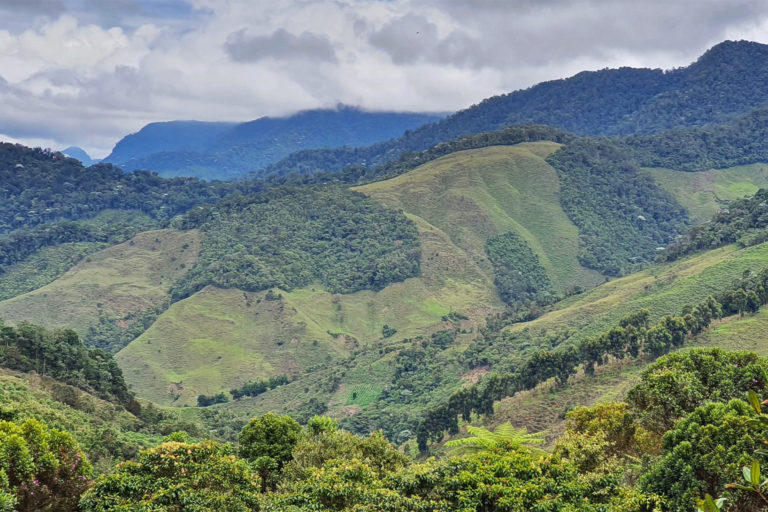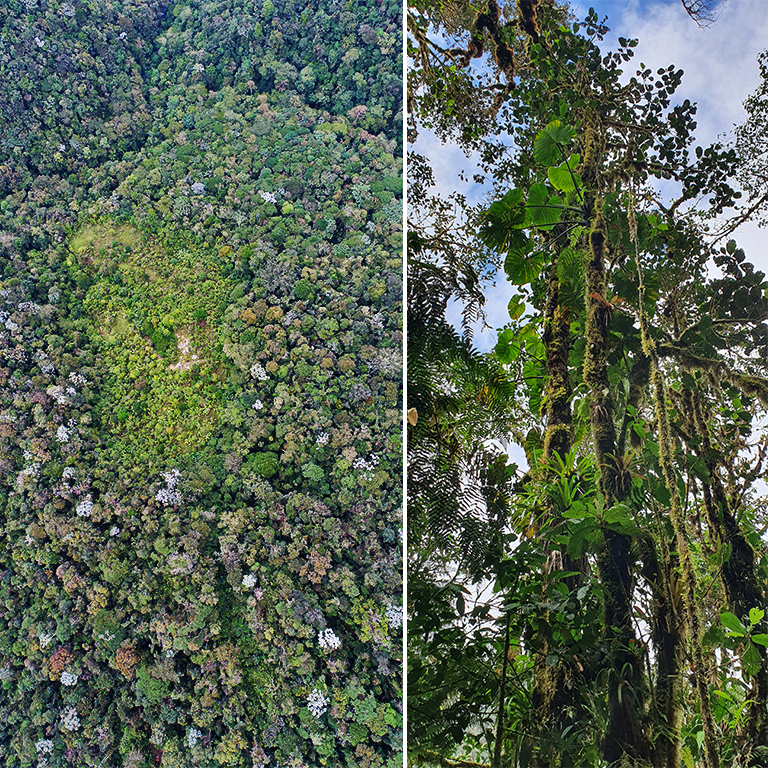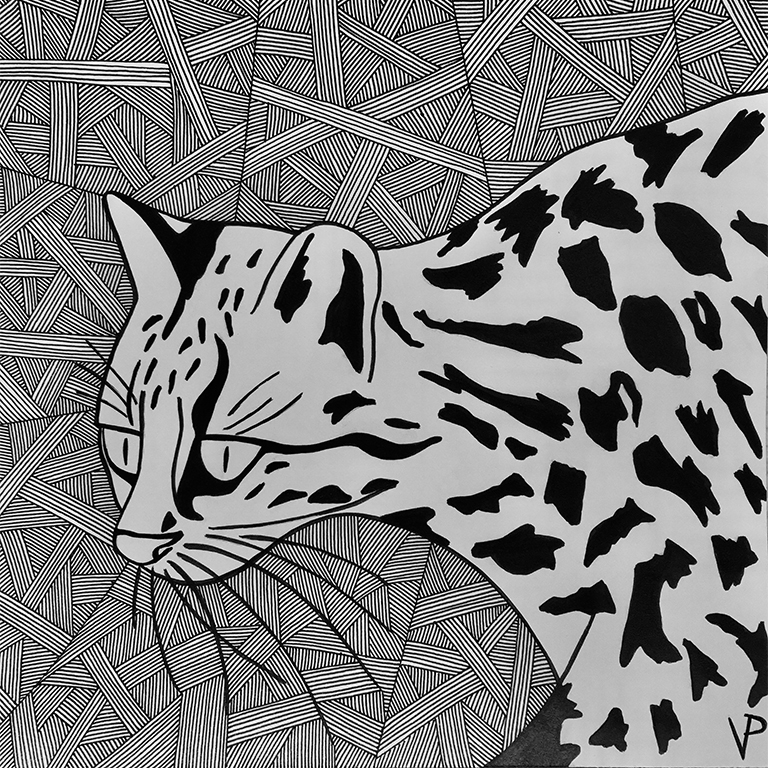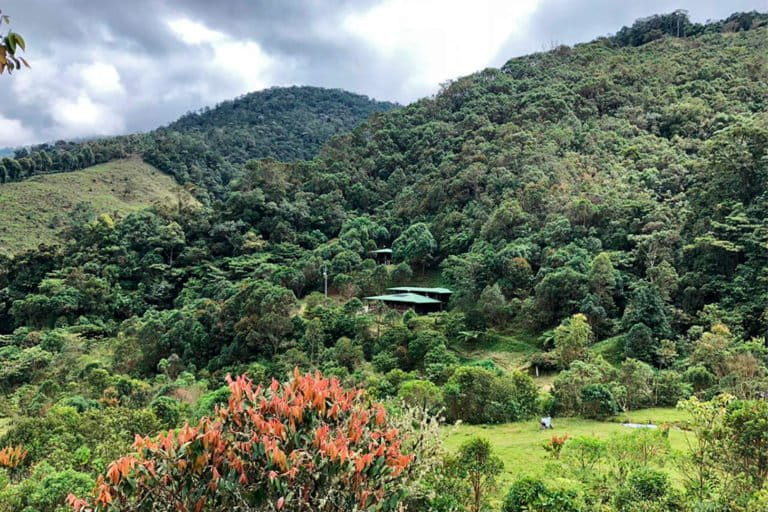Colombia Lizard Drawing Easy Land Animals in Colombia Rain Forest
- Recognized as one of the world's most biodiverse regions, the tropical Andes host more than 10% of the planet's biodiversity — roughly two million species of plants, animals, fungi and microorganisms — of which only 10% have been identified.
- This precious ecosystem is in peril because, in the past few decades, 75% of natural habitat has been lost largely to agricultural expansion.
- La Mesenia-Paramillo Nature Reserve in the Colombian Andes is attempting to stave off the threat by restoring 3,500 hectares (8,650 acres) of degraded land and connecting about 100,000 hectares (247,000 acres) of intact forest with the main Andean chain as a habitat corridor.
In 2006, the world's leading hummingbird photographer, Luis Mazariegos, visited La Mesenia, an isolated village in Colombia's western Andes. He had no idea that besides taking a picture of the recently rediscovered glittering starfrontlet (Coeligena orina), he would find a place that hosts overwhelming biodiversity. The forests here, spanning altitudes from 1,700 to 3,170 meters (5,600 to 10,400 feet), are permanently covered in clouds due to high humidity and are home to 374 known species of birds, 183 mammals, more than 600 plants and 5,000 insects, and other invertebrates.
However, the northern tropical Andes have lost almost 75% of their natural habitat largely to agricultural expansion and are starting to witness the additional damaging impacts of climate change. Cloud forest species such as ocelots and tanagers are moving upslope to maintain a favorable climate, but the degraded and fragmented landscape has blocked their way. In Peru, 55 bird species were found to have moved an average of 49 m (161 ft) upslope over the course of 41 years.

Nestled between the western and eastern slopes of the Colombian Andes, the very narrow corridor of forest in La Mesenia nearly disappeared due to deforestation. There was a threat that 100,000 hectares (247,000 acres) of rainforest would be pinched off from the main Andean chain. If that happened, the populations of many big mammals like spectacled bears (Tremarctos ornatus), pumas (Puma concolor), jaguars (Panthera onca) and ocelots (Leopardus pardalis) might have been too low to survive.
"We must give isolated populations a chance to meet each other. Reforesting areas with native trees and reconnecting fragmented landscapes is the most cost-effective way of protecting species," says Stuart Pimm, a world leader in the study of present-day extinctions and Doris Duke professor of conservation at Duke University. Pimm's NGO, Saving Nature, teamed up with Mazariegos's Hummingbird Conservancy to create a 6,000-hectare (14,800-acre) reserve.

Beginnings
In the late 1990s and early 2000s, La Mesenia was in the crossfire between guerrillas, paramilitaries and the Colombian military forces. Guerrilla groups killed villagers accused of belonging to paramilitaries or having ties to military forces. For this reason, locals, who were dependent on cattle grazing, growing coffee beans, corn and sugarcane and hunting wild animals, were reluctant to trust Mazariegos. They thought he was looking for gold or wanted to chase the villagers away.
The first people to offer him their land were the owners of a cattle ranch who had previously been kidnapped by the guerrillas and who wanted to move away from the village. In 2008, the Hummingbird Conservancy bought their 280-hectare (700-acre) ranch and, within the next 13 years, acquired another 3,500 hectares (8,650 acres) of land, thanks to funding from Saving Nature, IUCN Netherlands Land Acquisition Fund and the U.S. branch of the Hummingbird Conservancy.
Since most of the acquired plots were forest and pastureland, the latter were allowed to recover naturally during the first three years. The degraded cattle pastures tended to reforest quickly with pioneer tree species. The Hummingbird Conservancy hired three local men whose job is to look for seeds and seedlings of native trees and plant them in tree nurseries. La Mesenia-Paramillo Nature Reserve has several tree nurseries with a capacity of 10,000 trees. The park rangers sieve organic soil and enrich it with chicken manure fertilizer and adjust the pH with lime before placing seedlings into bags.
Currently, seeds and seedlings of nearly 300 species of trees and shrubs have been collected and potted. The plants take six to seven months to grow to the right size before they are planted in pasturelands.
Results
After 13 years, the impact of the reforested corridor is easy to see. "When I wake up at 5 a.m. in the morning and hear the wonderful concert of bird singing, it fills up my heart because I feel like I am doing the right thing," Mazariegos says excitedly.
The population of endangered yellow-eared parrots (Ognorhynchus icterotis) has increased from a few individuals to hundreds. While it was uncommon to see more than three individual red-bellied grackles (Hypopyrrhus pyrohypogaster) in 2008, nowadays, groups of up to 100 of these blackbirds fly through the reserve. Birds like the chestnut-bellied flowerpiercer (Diglossa gloriosissima), which usually live at elevations higher than 2,800 m (9,200 ft), have now been observed at 2,400 m (7,900 ft), a sign that the connected forests are helping animals expand their territory. Black-and-chestnut eagles (Spizaetus isidori) have also returned to the reserve, now occupying two nests. While in the past, the presence of eagles meant harm to farmers, now, based on monitoring, the eagles have enough natural prey.

Top predators such as ocelots, pumas, oncillas (Leopardus tigrinus) and spectacled bears have also reappeared, with camera traps showing them with their young. Since roughly 53% of photos from the 24 camera traps installed throughout the reserve have recorded carnivores, it's clear that La Mesenia-Paramillo Nature Reserve is effective in the conservation of mammals. The remaining photos depict prey species, such as red brocket deer (Mazama americana) and large rodents like the lowland paca (Cuniculus paca) and pacaranas (Dinomys branickii).
The land in the reserve is in various stages of restoration, from fully recovered areas to areas in the early stages. A research cabin that used to sit on barren cattle pasture is now surrounded by a tall forest. The reserve connects 100,000 hectares with the main Andean chain and also protects the San Juan Antioquia River watershed, which 14 communities depend on as their primary water source, and the San Juan Choco River watershed in the Pacific slope.

Involving the local community
"One of the most important lessons that I learned is that all conservation is local," Pimm says. "You cannot do conservation out of your air-conditioned office inside Washington, D.C. or London. You have to get out there and empower local communities."
Initially the villagers considered La Mesenia-Paramillo Nature Reserve as something separate from their community. This attitude changed when they saw that the reserve not only directly benefits the community but also actively involves them.
Now, they feel ownership.
The Hummingbird Conservancy employs three local people responsible for maintaining trails, guiding visitors, collecting samples and data, planting trees, and carrying out general infrastructure maintenance. The reserve also generates income for other villagers who are hired as cooks, guides and reforestation workers. Depending on the activity, their pay ranges from $14 to $20 per day, which is 40% above the Colombian average daily pay of $10. In 2020, the organization also hired a scientific director.
In 2017, a new road that connected the village for the first time with the nearest town was built by the community along with a new bridge. The Hummingbird Conservancy also installed 23 septic tanks in households to avoid contamination of the San Juan Antioquia River and reforested a 3-kilometer (2-mile) stretch along the river. In addition, the school, which was closed for seven years, was reopened with new desks, computers, and books from the organization.
Currently, the organization is helping villagers produce organic sweetener from sugarcane for export and helping coffee growers improve the quality of their beans to sell at a better price. They also started a honey production project with 11 bee colonies with a local stakeholder.

Science
In 2010, a cabin was built to welcome Colombian and international researchers who come here to carry out studies and biodiversity surveys. In 2016, a 10-year study was launched to establish an inventory of medium and large mammals and study the recovery of these highly decimated species due to hunting and habitat loss. It's the first study of its kind in the Western Andes and should help determine the IUCN conservation status of individual species, of which several are missing. These include a species of armadillo, Cabassous centralis, cataloged as "data deficient," as well as a brocket deer, Mazama zetta, that the IUCN has not yet evaluated.
In 2018, the Hummingbird Conservancy started monitoring the two black-and-chestnut eagle nests found at the reserve to document the birds' reproductive biology and obtain video of their behavioral aspects.
In 2019, the Hummingbird Conservancy and four Brazilian researchers started a five-year project to identify the biodiversity of Darwin wasps (family Ichneumonidae), boasting approximately 25,000 species. In the same year, another five-year study was launched to identify the biodiversity of spider-hunting wasps (Pompilidae). These have been studied throughout the Americas but not within tropical South America.
In 2020, a molecular lab capable of direct sequencing of native DNA/RNA and sequencing amplified samples, was set up at the reserve. Adolfo Amezquita, the science director, and a group of collaborating herpetologists from Universidad de Antioquia have described several new species of amphibians and lizards as well as orchids.
The most recent project involves measuring horizontal rain caused by clouds and captured by mosses and leaves. The Hummingbird Conservancy placed seven weather stations to measure this phenomenon at different altitudes. A doctoral student from Universidad de los Andes with the scientific director and one of the park rangers carry out this study.

Challenges
Since the area does not have any known mineral deposits and the threat of deforestation has been reduced in Antioquia due to strong environmental enforcement, the biggest challenge is to make the project financially sustainable. Presently, Mazareigos pays all the operational costs to maintain the reserve ($6,000 per month) and all the research costs.
One of the ways to generate income is through high-end ecotourism, which has been happening since the cabin was built in 2012. Political instability in Colombia, however, has made tourists reluctant to visit the country. As of June 2021, the U.S. State Department has advised U.S. citizens not to travel to Colombia due to COVID-19, civil unrest, crime, terrorism and kidnapping.
Besides the significant reduction of ecotourism, the Hummingbird Conservancy has also had to deal with another problem: land is becoming more expensive.
Over time, the nearest town of Jardín has become a popular tourist destination because of a soap opera filmed there. It has attracted actors as well as visitors from Europe who go there to live and retire, thus driving up land prices.
To meet the goal of securing a roughly 6,000-hectare corridor, the reserve still needs to acquire a dozen properties spanning a total 2,500 hectares (6,200 acres). To do this, the Hummingbird Conservancy and Saving Nature still need to raise roughly $2 million. Their aim now is to plant more than 300,000 trees in the next two years and thus restore 300 hectares (740 acres) previously dedicated to cattle grazing.
"When I went up the valley in 2012, the field station was sitting in the middle of a huge cattle pasture," Pimm says. "Now when you go up, you are walking through a forest and are on the top of the forest. It's enormously exhilarating to know that we can make a difference. We can turn this battle around and begin to save nature."

Citations:
Forero-Medina, G., Terborgh, J., Socolar, S. J., & Pimm, S. L. (2011). Elevational ranges of birds on a tropical montane gradient lag behind warming temperatures.PLOS ONE,6(12), e28535. doi:10.1371/journal.pone.0028535
Hethcoat, M. G., King, B. J., Castiblanco, F. F., Ortiz-Sepúlveda, C. M., Achiardi, F. C., Edwards, F. A., … Edwards, D. P. (2019). The impact of secondary forest regeneration on ground-dwelling ant communities in the tropical Andes.Oecologia,191(2), 475-482. doi:10.1007/s00442-019-04497-8
Banner image of a black-and-chestnut eagle (Spizaetus isidori) by Osman Lopez.
Source: https://news.mongabay.com/2021/07/in-the-colombian-andes-a-forest-corridor-staves-off-species-extinction/

0 Response to "Colombia Lizard Drawing Easy Land Animals in Colombia Rain Forest"
Post a Comment